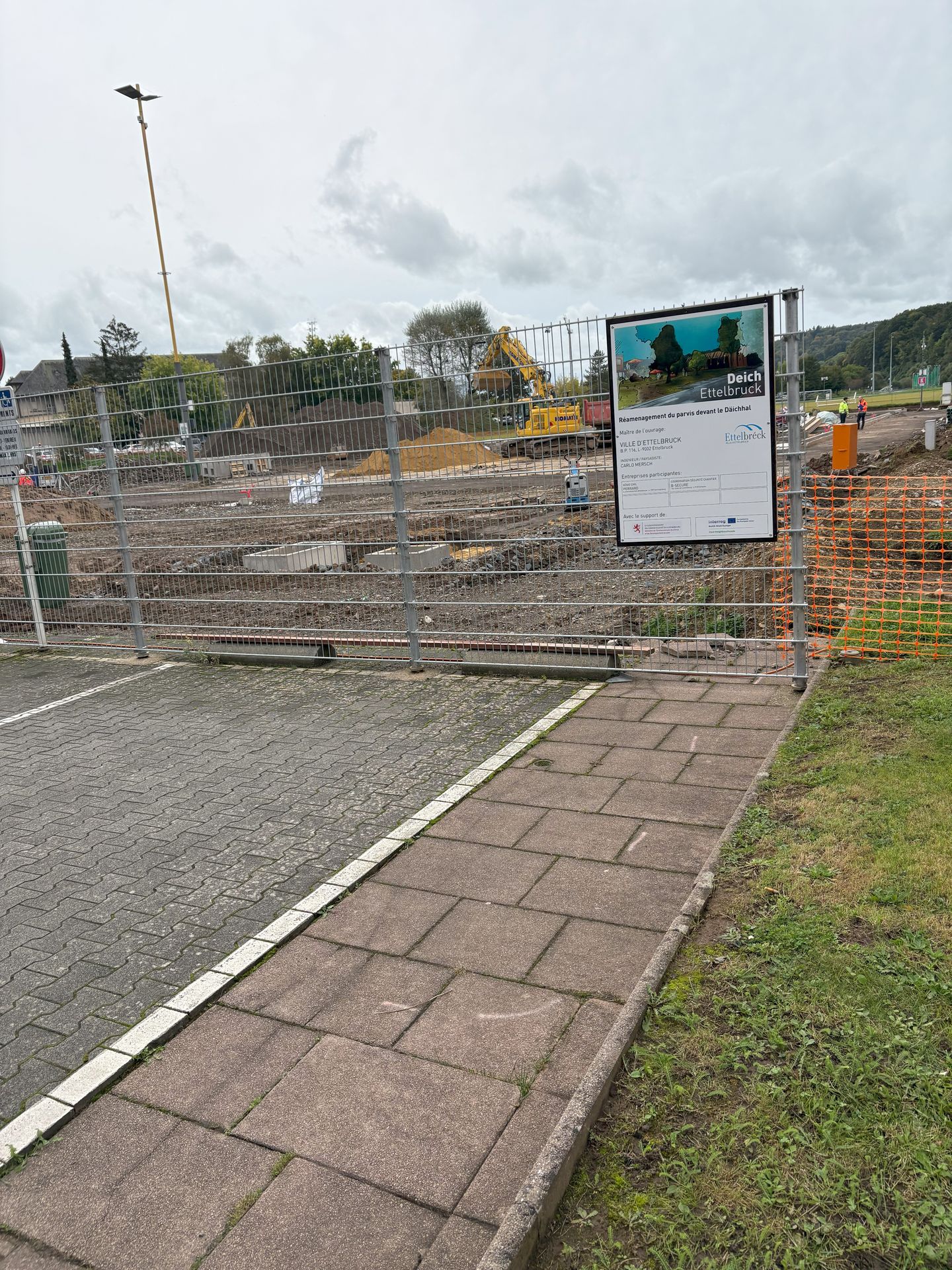As part of the Interreg North-West Europe
(NWE) project Cool Neighbourhoods, the City of Ettelbruck (Luxembourg) is
redefining its urban landscape to better adapt to climate change. The
transformation of part of the Däichwisen car park into a multifunctional green
hub marks a significant step forward in creating sustainable, resilient, and
more liveable urban environments.
Responding to Urban Heat
With rising temperatures, cities are increasingly facing the challenges of
urban heat islands, which can pose health risks and reduce overall liveability.
In Ettelbruck, a bold response has been launched: the removal of 350 parking
spaces to create a large, green public space. “Naturally, the discussions among
the mayor, aldermen, and the municipal council were not easy,” explained
Jean-Paul Schaaf, First Alderman of Ettelbruck. “No politician likes to remove
parking spaces from a site known throughout the country.”
Fortunately, the city had recently completed a new covered car park with 450
spaces, ensuring that parking capacity was not significantly reduced.
A Shared Vision and Careful Communication
“From the very start, it was crucial to communicate clearly,” recalled Sacha
Oberweis, General Coordinator of the City’s Technical Services. “We had to
highlight the benefits of the project and its impact on residents and the city
as a whole.”
Oberweis, responsible for the project’s implementation, emphasised that the
Cool Neighbourhoods initiative is part of a broader European effort. Funded
under the Interreg North-West Europe Programme, which supports regional
cooperation and innovation across borders, the programme has an overall budget
of nearly €182 million for 2021–2027. Its goal: to promote balanced development
and better quality of life by building a greener, smarter, and fairer
North-West Europe.
Green Design and Climate Resilience
The Ettelbruck project offers multiple benefits:
- Reducing urban heat islands through vegetation and permeable surfaces
- Improving air quality by increasing green cover
- Enhancing biodiversity through climate-resilient planting
- Encouraging community engagement by creating an open, multifunctional event space
- Strengthening urban resilience with flood-adaptive infrastructure and ecological balance
In practical terms, the site covers 12,000 square metres in front of the
Däichhal, a venue that hosts major local events such as the Foire Agricole and,
in 2025, the LUGA (Luxembourg Garden Fair).
Grass-covered paving stones were removed, partially crushed, and reused to form
the base of the new green space. Climate-resilient species — 14 in total, many
of which are native or regional — have been planted to withstand heat and
flooding. The tree trunks were coated with white paint to reduce surface
temperature by 4–5°C, and irrigation is maintained through “camel bags”.

Accessibility and community use were also prioritised: a new LED-lit ramp now
connects to the Däichhal, alongside new seating for outdoor performances and
social activities.
Funding and Partnerships
As an Interreg NWE project, much of the €995,814 investment was reimbursed —
specifically €597,488.40. Additional national funding of €288,500 was provided
through Luxembourg’s Méi Natur an eise Stied an Dierfer programme, which
supports municipalities that replace sealed surfaces with green infrastructure.
Looking Ahead
This marks Ettelbruck’s first Interreg project, but certainly not the last.
“It’s a pioneering step for our city — and a strong message about our
commitment to liveability and climate resilience,” concluded Jean-Paul Schaaf.
Ettelbruck’s Cool Neighbourhoods pilot stands as a leading example of how towns
across North-West Europe can transform grey spaces into green, adaptive, and
inclusive places — a model for urban regeneration and sustainable living.